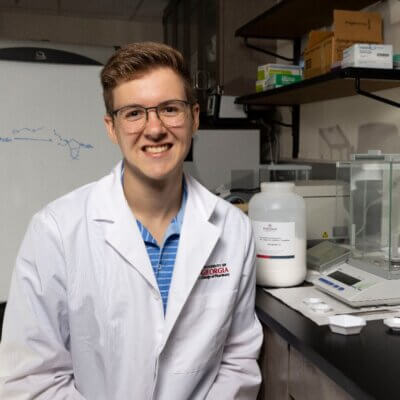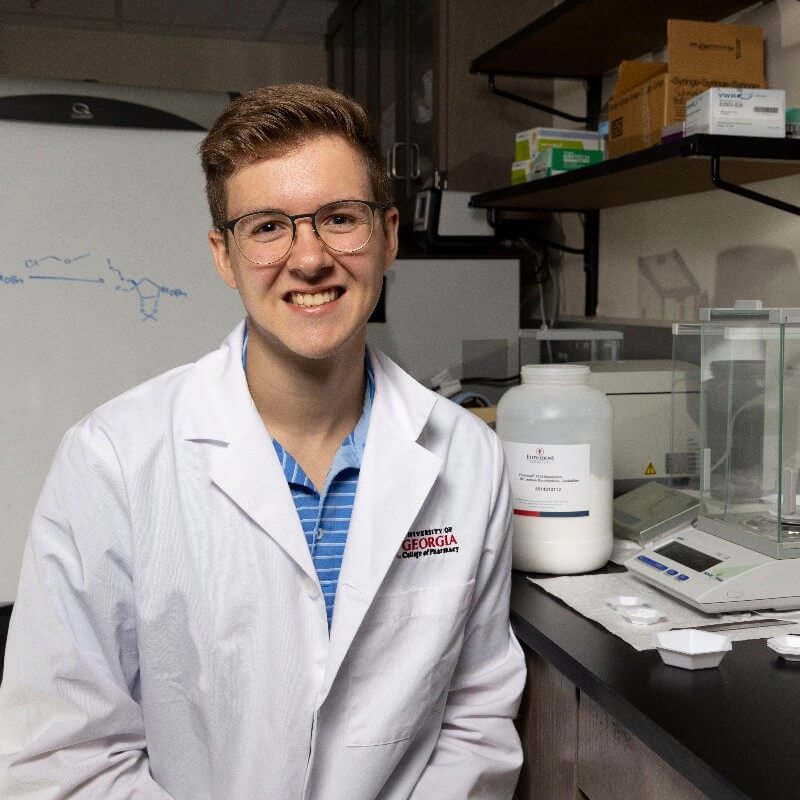
Ransom Jones
There comes a time in all scalable synthesis that requires the development of a functioning method to purify a synthesized chemical. This may seem to be a daunting task, both time and resource-expensive. However, by instead developing a transferable HPLC/UPLC method, these barriers can be eliminated. Often, the leap from HPLC to flash column may not seem 1:1, and in essence, it isn’t. However, by exploiting similar properties of the two chromatographic techniques, and developing from the start a scalable method, the purification of large-scale batches can be significantly easier.
The key to developing an HPLC method which will more easily scale to flash columns, is the similarity between both the mobile phases used, but more importantly, the solid phase chosen. Utilizing an HPLC column with column chemistry similar to a larger flash column will in theory “mimic” the environment and results observed via the HPLC column. Additionally, the most important aspect when transferring methods from HPLC to flash chromatography is the utilization of column volume (CV) instead of time when developing mobile phase gradients. Column volume, in its simplest form, is how many milliliters of volume (or mobile phase) can “fit” in a column. By scaling for column volume instead of time, different column lengths, widths, and packing densities can be accounted for, and the developed method can more easily be scaled.
There are two accepted methods to calculate column volume. First, and in my opinion more consistent, is calculating the volume of the cylindrical column, and accounting for the packing density. To do this, two different equations may be used.
𝑪𝑽= 𝝅𝒓𝟐𝑳∗𝟎.𝟕
a. Where r is the radius, L is the length, and 0.7 assumes 70% packing density.
In this first equation, an assumed packing density of 70% is utilized, which is often the standard in modern columns. However, in case either the packing density is readily available or differs significantly from 70%, the second equation may be used.
𝑪𝑽= 𝝅𝒓𝟐𝑳∗𝒅
a. Where r is the radius, L is the length, and d is the packing density.
While not always readily available, certain column manufacturers report the packing density/pore volume on their COAs, and nonetheless, this number can be back-calculated from the provided pore size, material particle size, and other characteristics that are beyond the scope of this article.
The second method to roughly determine the column volume is the time required for a non-retained compound to elute the column at a given pressure. For example, in the case of a 4.6x150mm 5μM C18 column, a highly polar compound elutes at 1.3 minutes at 1.5mL/min. In this case, the column volume can simply be determined by multiplying the retention time with the rate, to give a rough column volume of 1.95mL. This method may be more useful from column to column, where variability may change from the true calculated column volume based on the packing density. In practice, it is both preference and consistency that dictates which method is used.
Let’s develop a potential HPLC method that can be scaled to a larger flash column as necessary. First, an initial column must be decided upon, based on the structure/chemical characteristics of the target molecule. It is important to keep in mind the desired “purity” of the chemical. Often, in process chemistry, certain impurities may be difficult to chromatographically separate at a given step, though later may be readily separable. In this case, it is important not to spend an excessive amount of time developing a method that may produce an extremely “pure” product if additional chromatographic methods are to be utilized down the line. With, the target column, in our case a C18 4.6x150mm 5μM is chosen. The column volume, based on the first equation above, is calculated to be 1.74mL.
Next gradients must be determined, and this is highly compound-to-compound dependent. For our example, often a good starting point is to do an isocratic mixture for the first 1-2 CVs, followed by a ramping gradient for the next 5-10 CVs, and finally a re-equilibration isocratic mixture for 1-2 more CVs. For example, a method may start with 80:20 Water/Methanol for 1 CV, then ramp to 80% methanol until CV 10, and finally re-equilibrate until CV 12. By determining our gradient in column volumes instead of time, this method is scalable based on both the column and flow rate utilized.
For our compound, a 25g C18 21×117 mm flash cartridge is utilized, with a calculated CV of 28mL. Since we used column volumes, we can now directly scale the developed HPLC method. Often, modern flash systems will have preprogrammed column volume values for different column weights. This is especially true when utilizing flash cartridges and flash systems from the same manufacturer. This allows a quicker method development, as a single method can be written for any size column if the column volume option is selected.
SOME CLOSING THOUGHTS
Always make sure to utilize an appropriate solid-phase column that has a counterpart flash cartridge. Additionally, it is always much preferred in flash chromatography to utilize simple mobile phases, excluding buffers, ions, and other advanced methods unless necessary. Finally, while geared towards HPLC development, UPLCs may also be utilized to speed up the process, given that column volumes are utilized. In short, the development of a flash method to purify compounds can be greatly expedited by starting the initial development focused on a scalable HPLC method.
About the Author – Ransom Jones
Analytical Scientist at Mikart LLC, focusing on product development for drug substances and drug products. MSc in Pharmaceutical and Biomedical Sciences from the University of Georgia. Background in nucleoside synthesis for antiviral purposes. Extensive knowledge in the drug development pipeline, including API synthesis, toxicology in-vitro testing, formulation development, FDA regulations (cGMP/21 CFR 210/211), pharmaceutical analysis, and more.
Graduate work focused on medicinal chemistry, specifically on antiviral nucleoside analogs. Included leading projects, complex synthetic organic chemistry, analytical development (NMR, HPLC, LC, Mass Spec), and more.
Experienced in solid dosage formulation development, including acetaminophen tablets and piroxicam capsules. Hands-on experience with rotary tablet press, dissolution, TGA/DSC, disintegration, HPLC, spray dryer, and more.



